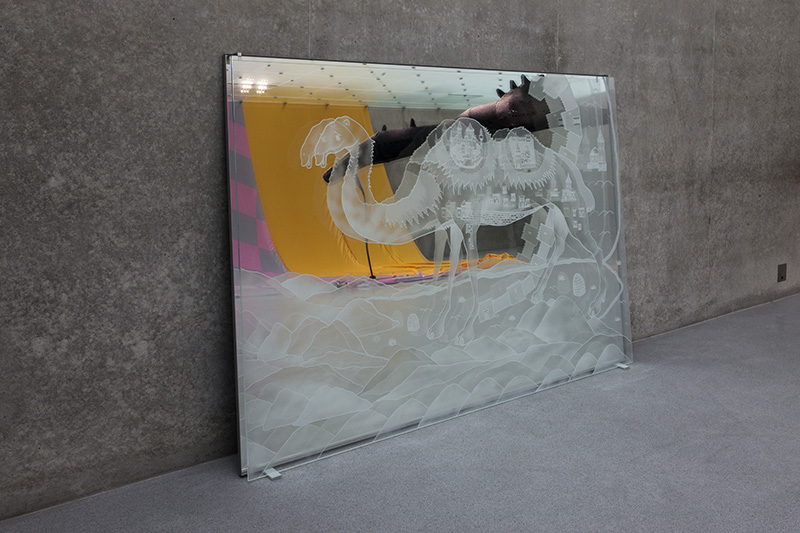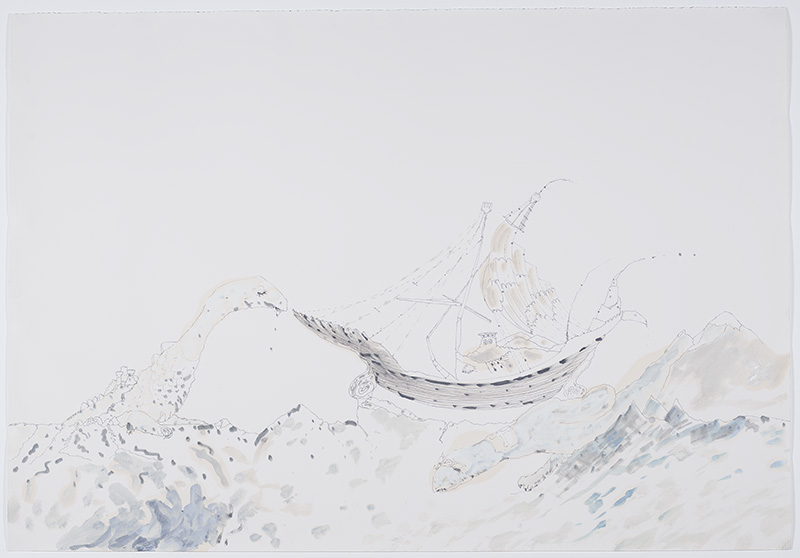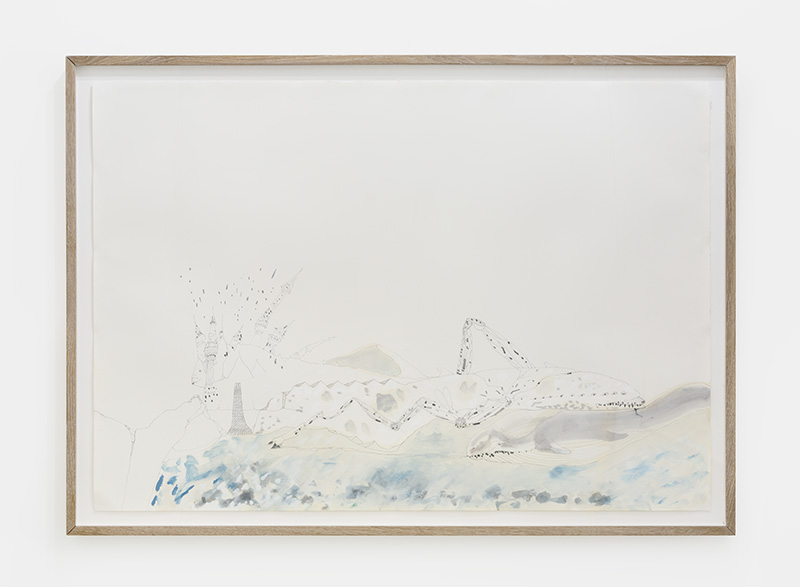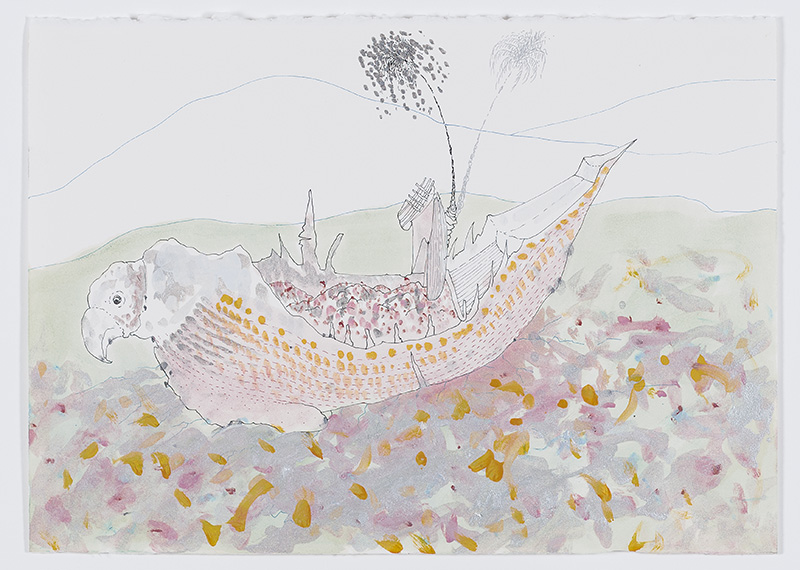ART CITIES:Milan-Wael Shawky

Living and working in Alexandria, Wael Shawky has received international acclaim for his work as an artist and filmmaker, exploring transitional events in society, politics, culture and religion in the history of the Arab world. Shawky’s estrangement of narratives through the use of puppets, child actors and television-show formats, emphasize the power that historical and mythical narratives hold over the way we think about ourselves and the world.
By Efi Michalarou
Photo: Lisson Gallery Archive Archive
For his first solo exhibition at Lisson Gallery Milan, Wael Shawky brings together a selection of drawings produced during the creation of his two critically acclaimed film trilogies: “Cabaret Crusades” (2010-15) and “Al Araba Al Madfuna” (2012-16). Drawing is a fundamental aspect of Shawky’s practice as it acts as a vehicle for storytelling, where fictions can become realities. The 20 drawings on display share insights into Shawky’s creative process when creating his trilogies. The drawings, delicately rendered in graphite, pigments, ink and oil, contain fantastical depictions of figures that exist only in the artist’s imagination, poetically staged in theatrical settings that echo the adventures of his films. The works on paper are exhibited next to a new freestanding glass mirror panel depicting a 14th Century map of one of the ancient cities of the Crusades. Also a retrospective of Wael Shawky’s work at Castello di Rivoli Museo d’Arte Contemporanea Curated by Carolyn Christov-Bakargiev and Marcella Beccaria (3/11/16-5/2/17, presents a series of film works, sculptures, and new wooden high-reliefs inspired by “Cabaret Crusades”. The trilogy “Cabaret Crusades” (2010-15) was nspired by Medieval Islamic sources like Usama Ibn Munqidh and Ibn al-Qalànisi—as well as “The Crusades through Arab Eyes” (1983) by the Lebanese historian Amin Maalouf, Shawky’s videos chart the numerous European campaigns to the Holy Land, starting from the early Crusades from 1096–1099 A.D. that are depicted in “Cabaret Crusades: The Horror Show Files” (2010) and the First and Second Crusades from 1099-1145 A.D. in “Cabaret Crusades: The Path to Cairo” (2012). The third and final video from the series, “Cabaret Crusades: The Secrets Of Cabala” (2015) centres on the period between the 7th and 12th Centuries, covering the crusades as well as a dispute between two Islamic sects. Based on accounts from primary sources, Shawky complicates the traditional civilization clash narrative by describing scenes that refute common notions of the era. Shawky highlights both the secular motivations of the European fighters and the competition and violence among Arab leaders. Shawky says the puppets help create a “Surreal and mythical atmosphere that blends drama and cynicism, telling a story of remote events that could hardly be more topical today. The puppets’ strings clearly refer to the idea of control. The work also implies a criticism of the way history has been written and manipulated”. The trilogy “Al Araba Al Madfuna” (2012-16), is inspired by Shawky’s visit to the village of Al Araba Al Madfuna, near Abydos, the archaeological site of the ancient city and a former capital of Northern Egypt. There, Shawky lived with its inhabitants for several weeks where he witnessed first-hand the community’s activities of digging underground to search for treasures, using metaphysics, alchemy and spiritual powers to find their ancestors secrets. “Al Araba Al Madfuna I” (2012), is based on the short story, “The J-B-R’s” by Egyptian author Mohamed Mostagab (1938–2005), about a tribe named Al Jabarina. “Al Araba Al Madfuna II” (2013) draws on two short stories, “The Offering” and “Horseman Adore Perfumes”, the first tells of a village mysteriously struck dumb, forcing a reconsideration of methods for trading in a place that previously relied on the power of language and the spoken word. The third film “Al Araba Al Madfuna III” (2015–16), is inspired by Mustagab’s short story, “The Sunflower”, uses the Ozorion and the temple of the Pharaoh Seti in Abydos as a “Natural” set of granite, water, and architectural elements in a place surrounded by myths still unknown today. In this last film, children act as if they were exploring the temple, walking towards it, looking at the walls of hieroglyphs, making gestures and suggesting a scene, for this film, the artist has made a conceptual decision to invert the colours, the greenish water of Abydos turns purple and the white stars in the dark universe become black dots in a milky sky.
Info: Lisson Gallery, Via Zenale 3, Milan, Duration: 9/11/16-13/1/17, Days & Hours: Mon Fri 10:00-13:00 & 15:00-18:00, www.lissongallery.com



